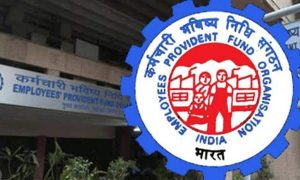The labour ministry and the Employees’ Provident Fund Organisation (EPFO) are looking at an overhaul of the Employee Pension Scheme (EPS) to make it more viable and possibly raise the resources to fund higher monthly pensions. The issue, which was discussed at the last meeting of the EPFO’s Central Board of Trustees, is expected to also figure high on the agenda at the next meeting, which is likely in February.
Declining contributions by current members and an increase in the number of pensioners have sparked concerns over the viability of the social security scheme, amidst demands for a hike in the minimum monthly pension.
Read More: Provident Fund: EPF Subscribers Can Check PF Balance Using UMANG App, SMS, Phone Number. Here’s How
Pensioners of the EPS get a minimum guaranteed pension of Rs1,000 and there have been suggestions to increase this in light of the rising inflation.
Meanwhile, the recent Supreme Court ruling on higher pensions has inflated the EPFO’s potential outgo on pension and it is estimating the exact liability arising out of the ruling.
Actuarial calculations reveal that there is a mismatch between the minimum and required contribution for the scheme even earlier. To earn a minimum monthly pension of `1,000 with 10 years of pensionable service, a member should contribute at least `711 per month for a continuous 10 year period. Of the 61.2 million contributing members to the scheme in 2021-22, more than half or 34.7 million members contributed less than `700 per month towards pension.
The current statutory wage limit as per the scheme provisions is `15,000 per month, which would imply a monthly contribution of `1,250 by a member.
Read More: PPF: Know rule for closing account before maturity and if penalties are applicable
The number of pensioners and the pension disbursed under the scheme has also steadily increased. As on March 31, 2022, the EPS had nearly 7.3 million pensioners with a corpus of `6.89 trillion, increasing by almost 86.41% since 2016-17. It had disbursed `20,922 crore as pension and withdrawal benefits in 2021-22 and `20,378 crore in 2020-21.
However, the EPS had a net actuarial deficit of `37,327 crore as on March 31, 2019. The situation since then may have become more dire. The EPFO is in the process of appointing actuaries for the valuations of the pension scheme for the year 2019-20, 2020-21 and 2021-22.
Officials note that there are various reasons for lower contributions such as low monthly pay and existence of non-contributory periods due to leave and job losses. Another reason could be that the wages are structured in such a manner that a higher amount is paid as allowances other than dearness allowance, leaving the basic salary very low.





































